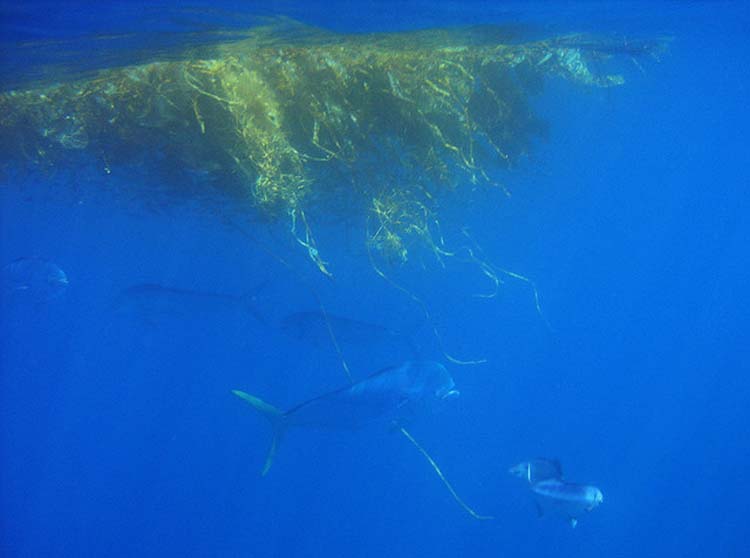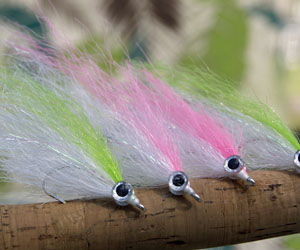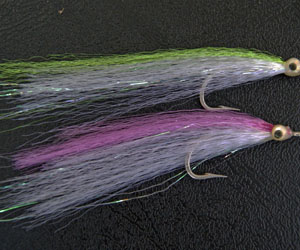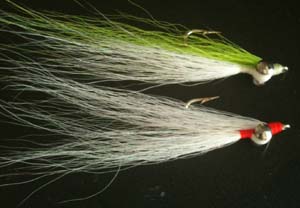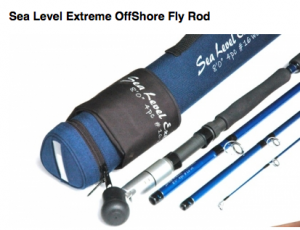By Grant Gisondo
[dropcap]A[/dropcap]t 5:00 o’clock in the morning on a Saturday in July, 2012, I start M’Ocean Grant’d, my 28-foot center console. I hear her engines running in sync so I undue the lines and I’m off. The sun is just peaking over the horizon when I clear the Palm Beach Inlet. I head due east. The Atlantic is dead flat-calm. In around 280-feet of water, I find what I’m looking for. A large patch of weeds.
In the spring and summer months, after a few days of a wind with some east in it, there will be an accumulation of weeds from 80 to 700-feet long (see photo above). These weed lines are famous for holding dolphin. However, if you don’t know how to fish a weed line, it can be a very frustrating experience, especially when every other boat around you has a bent rod
Courtesy
There are some common mistakes that should always be avoided. Most importantly, if you come across a weed patch and there is another boat already there don’t pull up right next to them and start casting. They were there first and should not be pressured by you or anyone else. You should expect the same from others. In the Keys and even here in Palm Beach at public ramps, more than a few harsh words have been exchanged and more than a few broken noses got to visit local hospitals.
Almost always there will be another patch in the same vicinity. Never run or drift through the patch – that will scare off any life holding in those weeds. Always approach a weed line with care. Never run up to the weed line full speed and then throw the boat in reverse to stop and expect to catch fish. Rather approach the weeds slowly and carefully, almost like you are docking. Let your boat drift the last 100-feet to the weed line.
When working a weed line you want your motor/s off and you want to set up a drift that floats you parallel to the weeds or with the weeds rather than through the weeds. On days where your must leave your engine/s running, stay as far away from the weeds as you can and still be able to cast efficiently and accurately. Plus, weeds in your propellers are not a good thing. Drifting parallel to weed line also allows you make many casts and try different flies. Don’t position your boat so that you’re constantly pulling up to the weeds, making just a few casts, quickly drift out of casting range and have to constantly restart the engines to run back to the patch. Do everything you can to keep your fly in the water.
Very good Polarized glasses are a must
Whenever I come up to weeds, I start chumming. Purists may not want to chum – it’s up to you, but chumming works a lot better. Since I stated chumming my catch rate has gone way up. For me it’s not about being “pure” it’s about making my reels scream! With chumming you’ll also know pretty quickly that the quarry are home or not home. I throw out either live bait or chunks of bait and watch the water closely. What you’re looking for is not just surface action, but flashes in the water signifying that animals are around. If any big predators are in the area, they’ll quickly make their presence known when there’s live bait in the water.
Make it a high toss
I see a lot of people chumming incorrectly – a wasted effort. Here’s how to maximize the using bait. Put a couple of in your bait net and make your toss high (over the volleyball net) so they when they hit the water they make a splash. Don’t just drop them in the water or make baseball-like pitch for distance. The splash sends a vibration in the water that mimics scared bait fish. All game fish can hear that from an incredibly long distance. Also, throw your bait 360 degrees around the boat so the water around you is well covered, but do it with a little timing in between throws – you’re looking to see what happens.
Intermediate and sinking
There are two fly lines I recommend to work the entire weed line. Remember that the weeds float on the surface, but below the weeds are baitfish and below the bait fish are predators. I start out with an intermediate line. I try to land my fly as close to the weeds as possible but not actually in the weeds. I allow the line to sink for 5- to-20 second than start my retrieve. If I am not getting any bites I’ll switch to option two. My other rod has a full sinking line. I follow the same procedure. These steps will help locate where the predators are located – just under the weed line or deep below the weeds. These two line choices cover just under the weed line all the way down to 70- to 80-feet of water.
Lurking below
Recently, I came onto a weed patch I threw an intermediate line and immediately hooked up with albie after albie until my arms hurt. Just for the fun of it, I switched to the sinking line which sank my fly past the ablies and deeper where I hooked up a king fish. Potentially, under the albies are kingfish, tuna, wahoo and dolphin. Sometimes the dolphins are mixed in with the ablies, but predator fish are smart. They will let the ablies do all the work and sit below the school and eat the fish that the albies miss. Get your fly past the albies and you may be in for a treat.
The fly selection I use is simple. Use a 4- to 6-inch heavy fly made out of super hair with large eyes similar to the Kingfish flies with a full sinking line or a general bait fish pattern (also available on my website) with intermediate lines. I have also found that Clousers, deceivers and crab patterns can be quite effective. The best colors for flies when fishing a weed line are pink/white, chartreuse/white and blue/white. The rigging is simple. Straight from the fly line I tie 4-to 6-feet of fluorocarbon right to the fly with an improved clinch knot. If I know there are toothy fish around I will add 4- to 6-inches of #5 single strand wire with a haywire twist to the fly.
A rod you’ve never heard of fits the bill
For rod and reel set ups I really like Sea Level Fly Fishing’s Extreme Reel with a matching rod. The Sea Level rod is 7- 11-inches 8-weight, but casts like a 10-weight rod. It’s a fighting stick with remarkable castability. For me, it’s must have for any blue water fly fisherman. When I am fishing offshore, I prefer a shorter rod. When a big fish decides to fight deep in the water column the backbone of a shorter rod really aids in landing the fish quickly and getting healthy fish released. I typically carry 9-weight through 12-weight offshore and tend to a 9-weigh and a 10-weight for weed lines. I rather err on the side of heavy than having a 50-pound Wahoo bite my fly on a 7-weight and not land the fish or let the sharks have lunch on me.
Work a plan to be successful
I generally give a weed line or patch about 20 minutes before I move on to another patch or another area. Sport fish around weeds can “turn on” and “turn off” at any given moment. So if they aren’t producing early in the morning, I’ll mark them on my GPS, and return later to see if there is any action.
[information]
Readers are welcome to contact me with any question or if you would like to be a guest on my boat for a day offshore. I can be contacted through my website (www.moceangrantd.com) or at moceangrantd@gmail.com
[/information]


